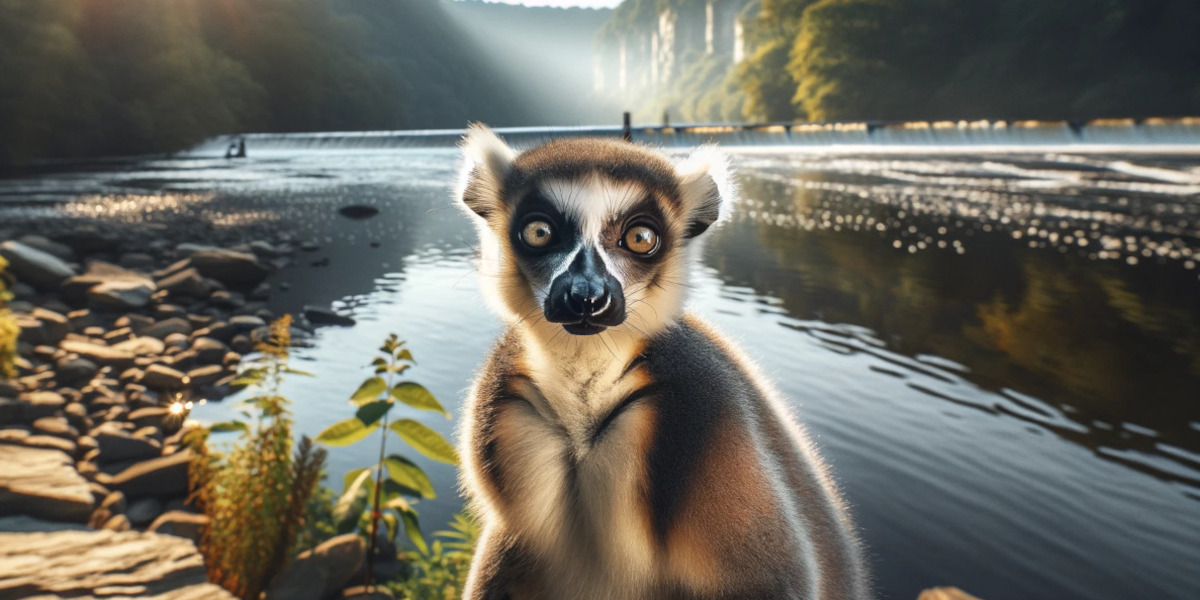
Introduction
Lemurs, known for their large, expressive eyes and playful demeanors, are among the most charismatic primates on Earth. These animals have captured the imaginations of many people worldwide. Their defining characteristics include a long, bushy tail, which they often use for balance and communication, and their varied social structures, ranging from solitary to highly social.
To quickly address the question, “Do lemurs live in Florida?” The straightforward answer is no. Lemurs are not native to Florida or any other part of the United States. They are endemic to Madagascar and cannot be found in the wild outside of this island.
However, in settings such as zoos, wildlife sanctuaries, and private collections, lemurs can be found in Florida. These are controlled environments where lemurs are cared for by humans. They do not represent a natural population in the region.
Florida’s Wildlife and Ecosystem

Overview of Florida’s Natural Ecosystem
Florida’s ecosystem is as diverse as it is expansive, encompassing a variety of habitats that include coastal beaches, dense forests, sprawling wetlands, and numerous water bodies. This ecological variety supports a wide range of wildlife, making Florida one of the most biologically diverse states in the United States.
The most prominent ecosystem in Florida is the Everglades, a vast wetland that covers much of the state’s southern region. It contains coastal mangroves, sawgrass marshes, and pine flatwoods, home to wildlife such as the American alligator, the Florida panther, and many different bird species like the Roseate Spoonbill and the Great Egret.
The coastal regions of Florida boast beautiful beaches and coral reef systems, providing habitats for sea turtles, a variety of fish species, and manatees.
Moving inland, the state’s landscape transitions into hardwood forests, pine savannas, and scrublands, each with its distinct set of flora and fauna. This variety of ecosystems has made Florida a hotspot for biodiversity, supporting species that are found nowhere else in the world.
Presence of Non-native Species in Florida
Florida’s warm climate and numerous waterways have also made it a hub for non-native species, some of which have thrived in the state’s welcoming environment. These species have arrived in various ways. Some were intentionally introduced, while others arrived unintentionally through global trade or as escaped exotic pets.
One of the most notable non-native species is the Burmese python, which has established a breeding population in the Everglades. Originally brought to Florida as part of the exotic pet trade, many pythons found their way into the wild through accidental or intentional release. Their presence has significantly impacted local wildlife, as they compete with native species for resources and prey on native birds, mammals, and reptiles.
Similarly, the lionfish, native to the Indo-Pacific region, has become a significant concern in Florida’s coastal waters. Believed to have been released from aquariums, lionfish are prolific breeders with few natural predators in the Atlantic, posing a threat to native fish populations and the overall health of coral reefs.
Other non-native species, like the Cuban tree frog and various species of non-native lizards, have also established populations in Florida. These species often outcompete and prey upon native species, disrupting the local ecosystem balance.
The introduction and establishment of non-native species in Florida highlights the complexities and unforeseen consequences of human interactions with the environment. Efforts are ongoing to manage these populations and mitigate their impact, but the presence of these species could cause lasting effects to the natural ecosystems they have infiltrated.
Are There Lemurs in Florida?

Lemurs in the Wild vs In Captivity in Florida
When addressing the question of whether lemurs live in Florida or not, it is crucial to recognize the difference between lemurs in the wild and those in captivity. As established earlier, lemurs are native to Madagascar and do not naturally exist in the wild anywhere else. Therefore, there are no wild populations of lemurs in Florida or any other part of the United States.
However, in captivity, the story is different. Florida, known for its warm climate and diverse range of zoos, wildlife sanctuaries, and private collections, does host a number of lemurs. These animals are kept in controlled environments where they are cared for by humans.
Zoos and sanctuaries contain lemurs for educational, conservation, and research purposes. These facilities aim to provide environments that mimic the lemurs’ natural habitat as closely as possible, although they can never fully replicate the wild conditions of Madagascar.
In addition to these facilities, there are instances of lemurs being kept as exotic pets in Florida. This practice is less common and more regulated, as lemurs require specialized care and environments that are difficult to provide in a typical household setting.
Conservation and Legal Aspects of Lemurs Living in Florida
The legal framework governing exotic animals in Florida is complex and aimed at balancing animal welfare, public safety, and conservation concerns. The Florida Fish and Wildlife Conservation Commission (FWC) regulates the possession of exotic animals, including lemurs, through a system of permits.
These permits are designed to ensure that owners have the knowledge and resources to properly care for these animals and to prevent the release or escape of exotic species into the wild.
Conservation concerns are at the forefront of regulations surrounding lemurs in Florida. Lemurs are among the most endangered groups of vertebrates on the planet, with many species facing significant threats from habitat loss and hunting in their native Madagascar.
The conservation efforts in Florida, and in other parts of the world, often focus on captive breeding programs and public education to raise awareness about the plight of these unique primates.
However, the presence of lemurs in captivity outside their natural habitat also raises ethical and conservation-related questions. While educational and research-focused captive settings can contribute positively to conservation efforts, the keeping of lemurs as pets is more controversial. It is argued that the exotic pet trade can contribute to misconceptions about the viability of keeping wild animals as pets and potentially fuel illegal wildlife trafficking.
Conclusion
In conclusion, Lemurs do not naturally inhabit the wilds of Florida or any other part of the world outside their island home. The lemurs found in Florida are exclusively in captivity, residing in zoos, wildlife sanctuaries, and, in some cases, as part of private collections. These settings provide a controlled environment for these unique primates, often for the purposes of conservation, education, and research.
While Florida offers a home to lemurs in captivity, it also serves as a platform for education and awareness about these fascinating creatures. This situation serves as a reminder of the important relationship between humans, wildlife, and the environment, reminding us of our role in preserving the natural world for future generations.




